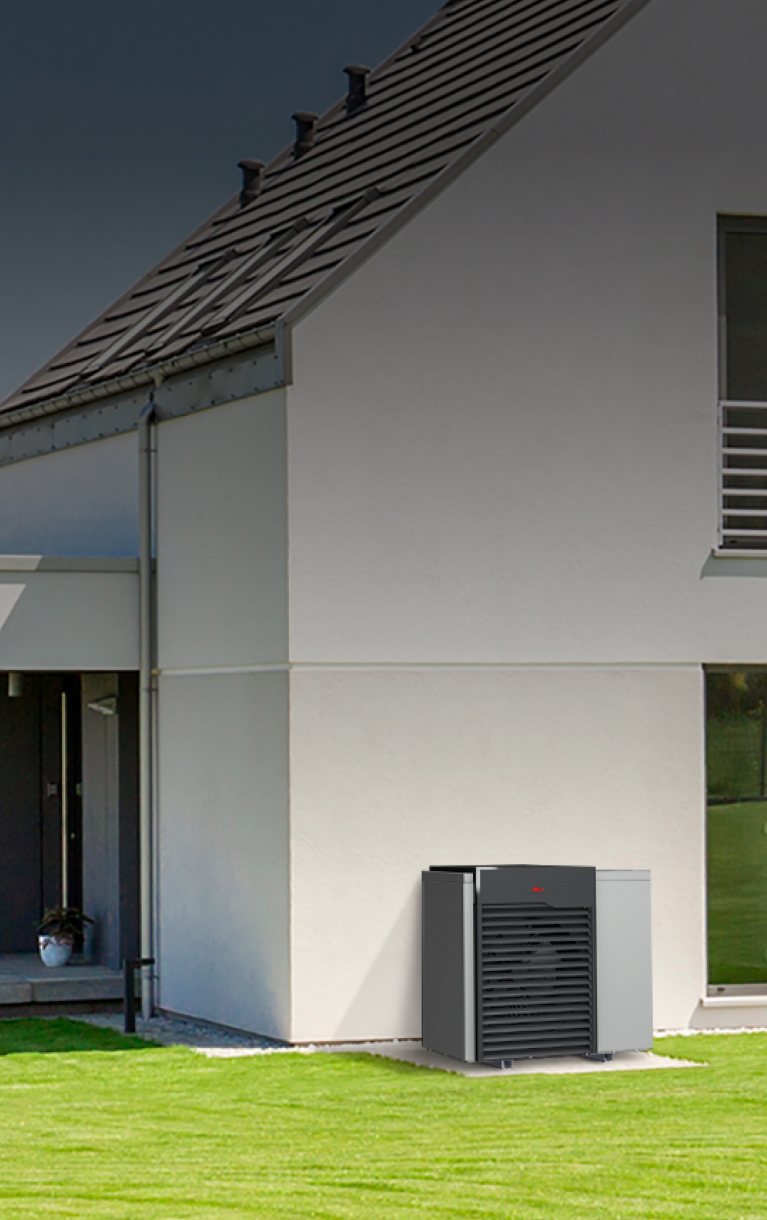Installation in a front garden
This is a common method of installation, as the AEROTOP® SX can be fitted close to windows facing the street. This ensures the unit remains a good distance away from neighbouring properties, as distances <3m to the house wall increase the sound level by 3 dB(A) compared to free-standing installation. (Please note: The air outlet of the heat pump should be at least 1m away from footpaths, especially public areas, such as pavements.) During cooler periods and in winter, the discharged air is cold and often moist - which can cause ice to form on the floor in front of the unit. In addition, people passing by should not be affected by any cold exhaust air.













